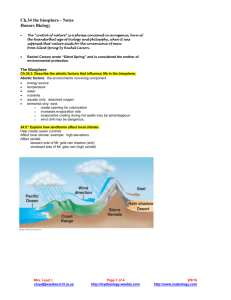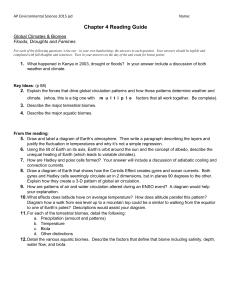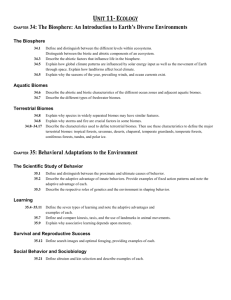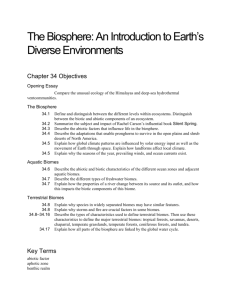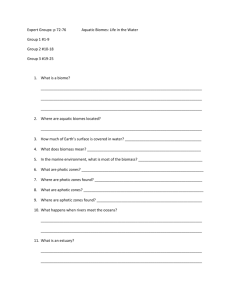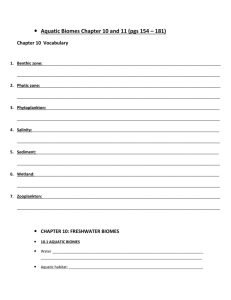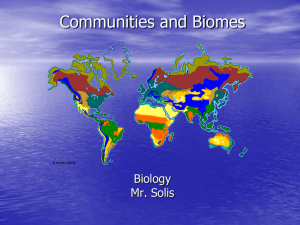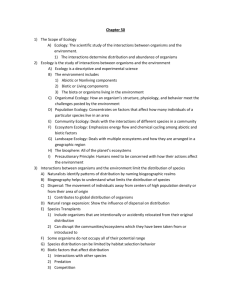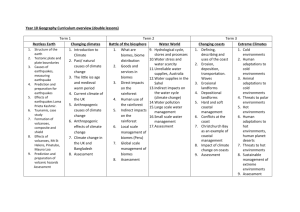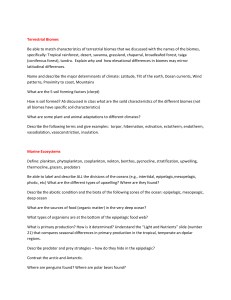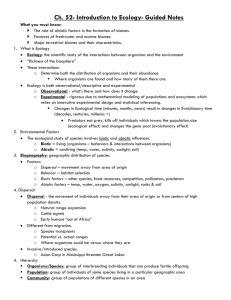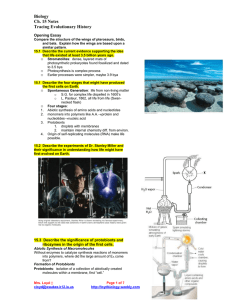File - Mrs. Loyd`s Biology
advertisement
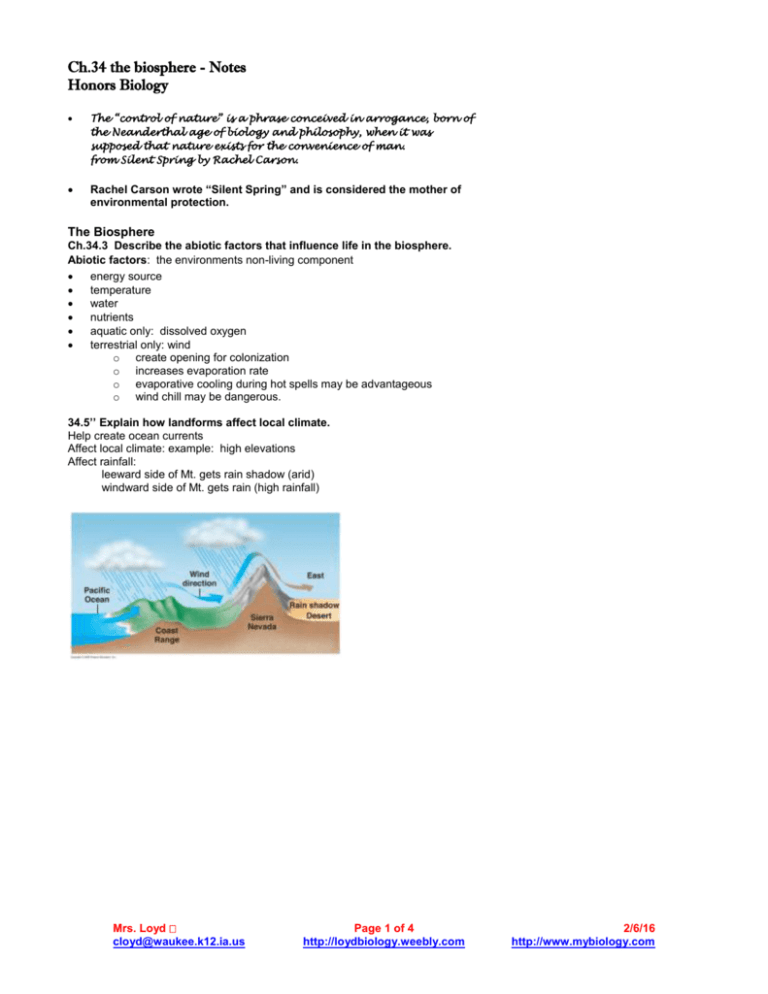
Ch.34 the biosphere - Notes Honors Biology The “control of nature” is a phrase conceived in arrogance, born of the Neanderthal age of biology and philosophy, when it was supposed that nature exists for the convenience of man. from Silent Spring by Rachel Carson. Rachel Carson wrote “Silent Spring” and is considered the mother of environmental protection. The Biosphere Ch.34.3 Describe the abiotic factors that influence life in the biosphere. Abiotic factors: the environments non-living component energy source temperature water nutrients aquatic only: dissolved oxygen terrestrial only: wind o create opening for colonization o increases evaporation rate o evaporative cooling during hot spells may be advantageous o wind chill may be dangerous. 34.5’’ Explain how landforms affect local climate. Help create ocean currents Affect local climate: example: high elevations Affect rainfall: leeward side of Mt. gets rain shadow (arid) windward side of Mt. gets rain (high rainfall) Mrs. Loyd cloyd@waukee.k12.ia.us Page 1 of 4 http://loydbiology.weebly.com 2/6/16 http://www.mybiology.com Ch.34 Biomes Notes 34.5’’’ Explain why the seasons of the year, prevailing winds, and ocean currents exist. Seasons due to: Tilt of Earth on its axis Direct vs. indirect rays of the sun Prevailing winds due to: (Major global air movements) rising and falling of hot/cold air masses Earth’s rotation Ocean Currents due to: Prevailing winds Earth’s rotation unequal heating of surface waters locations and shapes of the continents Aquatic Biomes (salinity) Mrs. Loyd cloyd@waukee.k12.ia.us Page 2 of 4 http://loydbiology.weebly.com 2/6/16 http://www.mybiology.com 34.6 Describe the abiotic and biotic characteristics of the different ocean zones and adjacent aquatic biomes. pelagic realm: open water benthic zone seafloor photic zone: depth of light penetration pelagic photic o zooplankton, fish, marine mammals benthic photic o phytoplankton photosynthesize “producers” o sponges, burrowing worms, clams, sea anemones, crabs echinoderms coral reefs (tropical waters) o coral, invertebrates, fishes continental shelves: shallow, submerged parts photic zone includes pelagic and benthic zones. aphotic zone: below photic very little to no light no photosynthesis o small fish, crustaceans, sea anemones, sea cucumbers, sea stars, , sea urchins. intertidal zone: ocean meets land pounded by waves at high tide exposed to sun and drying winds during low tide plants and animals attach to rocks or burrow in sand E stuary: freshwater river merges with ocean salinity varies from nearly fresh to nearly marine nutrients from river make it very productive oysters, crab, many fish, waterfowl. Wetlands transitional between aquatic (freshwater or marine) and terrestrial covered in water permanently or periodically aquatic plants mud flats and salt marshes often border estuaries Ch.34 Biomes Notes Mrs. Loyd cloyd@waukee.k12.ia.us Page 3 of 4 http://loydbiology.weebly.com 2/6/16 http://www.mybiology.com 34.7’ Describe the different types of freshwater biomes. lakes, ponds: standing water rivers, streams: running water abiotic factors: o current o sunlight o nutrients o temperature Terrestrial Biomes (Temp, Rainfall) 34.8’’ Explain why storms and fire are crucial factors in some biomes. disturbances create openings where more species can grow 34.8-34.16 Describe the types of characteristics used to define terrestrial biomes. Then use these characteristics to define the major terrestrial biomes: tropical forests, savannas, deserts, chaparral, temperate grasslands, temperate forests, coniferous forests, and tundra. Eight major types of biomes distinguished by vegetation, the foundation depends on climate (temp and rainfall) Tropical forest Savanna Desert Chaparral Temperate grassland Temperate broadleaf forest Coniferous forest Tundra Temp. equatorial Rain abundant equatorial Hot, Cold Dry, rainy season Low, unpredictable Plants Heavy tree canopy, vines Grassland, scattered trees Animals Live in trees grazers 24.17 Explain how all parts of the biosphere are linked by the global water cycle. Mrs. Loyd cloyd@waukee.k12.ia.us Page 4 of 4 http://loydbiology.weebly.com 2/6/16 http://www.mybiology.com
